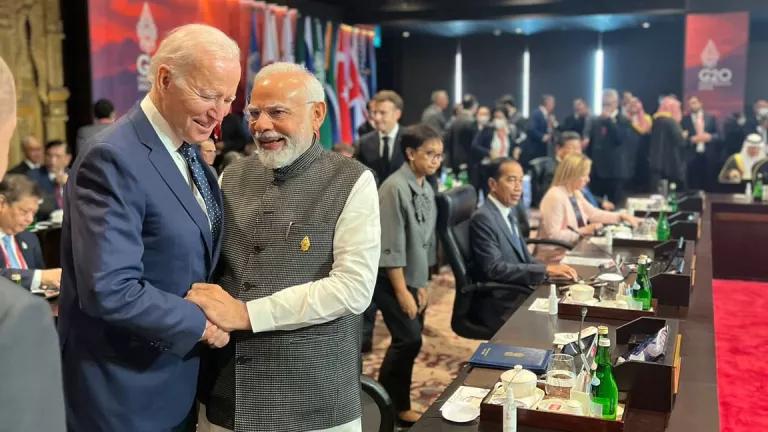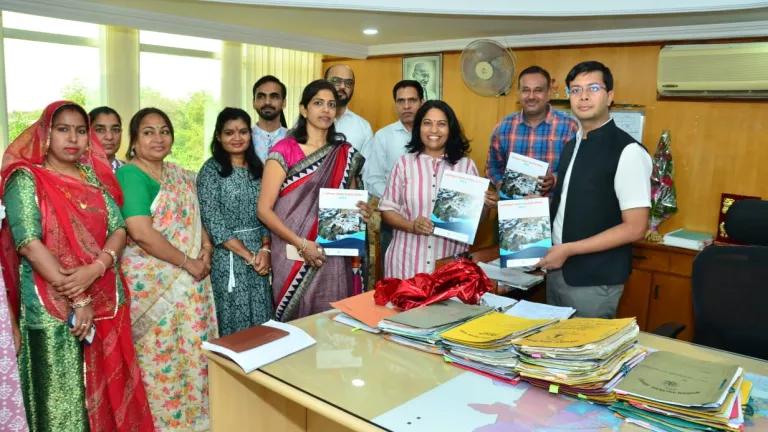This week, I’m in the western Indian City of Ahmedabad on a long-awaited trip. It’s over 100â°F here today, about 70â°F degrees warmer than it was as I left home in New York. As part of our ongoing activities to protect Ahmedabad’s residents from increasing heat, with the Mayor of Ahmedabad, my NRDC colleague Anjali Jaiswal and I helped lead an exciting media workshop to preview the City’s Draft Heat Action Plan – the first of its kind in South Asia. You can read more here from Anjali about her account of this week's events in Ahmedabad.
The Draft Heat Action Plan is based on our two years of research that we kicked off during my last visit to India in 2011. The official launch of the Heat Action Plan is coming up in April 2013, so we’re gathering this week to discuss the finishing touches and readiness for the heat season in Ahmedabad, including a soft release of the Heat Action Plan with local media.
I’m learning so much about what extreme weather and climate change mean for this rapidly growing city of 7 million-plus residents. Ahmedabad has its share of public health and community development issues, to be sure. But there’s so much energy, experience, and knowledge that NRDC’s partners the Public Health Foundation of India (PHFI) and Indian Institute of Public Health-Gandhinagar (IIPH-G) PHFI, and the Ahmedabad Municipal Corporation (AMC) plus other local experts, are bringing together to develop a Heat Action Plan.
NRDC’s India Initiative and key U.S. climate-health experts have been collaborating with these great India partners since 2011, along with the Climate Development and Knowledge Network. We’re working to develop ways to reduce heat vulnerability in Ahmedabad, where a heat wave in May 2010 had dramatic effects on mortality. While Ahmedabad experienced regional heat waves in 1981 and 1998, the 2010 heat wave raised flags for officials about the health threats of extreme heat -- much like the 1995 Chicago heat wave did in the United States. That event, which killed over 700 people in one week in Chicago in July 1995, forever changed the way American cities look at heat waves – very seriously.
The heat-health burden in Ahmedabad during their 2010 heat wave sheds light on some of the challenges faced here and in other cities, under a changing climate:
- Average annual surface temperatures across India could increase another 2-2.5â°C by the 2030s. If the mean increases by that much, then more extreme heat events will likely increase by more.
- We know from studies elsewhere in the world that certain characteristics of people, like being elderly, or very young, having heart or lung illness, or diabetes, can make you more vulnerable to heat stress. Or living in poverty. Unfortunately, these vulnerabilities are increasing in many, many places, at the same time that heat exposures are also increasing with climate change.
- Those vulnerability studies have come mainly from North America and Europe, where there’s been lots of work on heat’s health effects. In Ahmedabad, we didn’t know what factors make people more heat-vulnerable, because there have been few heat-health studies from India (or South Asia) available to international journal readers.
This is part of why we are so excited about this project: we can help increase scientific knowledge globally to drive action locally. Our research will help diminish the deficit of literature available to researchers on knowledge and practical experience from the field in India and South Asia, with more info on local vulnerability factors for heat illness and heat wave mortality. While we share our research and collaborative experience in these areas with an international research community, the project’s main goal is to benefit the public health and climate resilience of the people of Ahmedabad.
In the initial phase, our project team focused on identifying vulnerable populations and formulating strategies to project vulnerable communities. Our activities included slum community and construction worker surveys, medical officer and government official focus groups, semi-structured interviews with health care professionals, and site visits for data collection. We are looking at the findings from the 2010 heat wave mortality analysis now, with those vulnerabilities in mind.
With climate change increasing ambient temperatures and extreme heat in Ahmedabad, in South Asia, and globally, sharing our increased understanding of local heat-health vulnerability factors with the international research community could be timely and welcome information.
Around the world, dozens of cities have put Heat-Health Early Warning Systems in place, and more are on the way. 18 cities have systems already in the United States, including Chicago and Philadelphia; international cities include Shanghai and Tokyo in China; Victoria in Australia; Toronto in Canada; plus Rome and Paris, among others. But none yet in India. Ahmedabad’s will be the first!
I am so looking forward to continuing as part of this international collaboration. It’s tremendously exciting to anticipate talking together this week with Media leaders in Ahmedabad. The Media has a critical role to play in a Heat Action Plan, by translating and disseminating the technical information about approaching heat waves into messages that resonate and reach people, boosting Science into Action.
Because from start to finish, beginning to end, our project is about saving lives and helping the people of Ahmedabad to create healthier communities, more secure from the dangers of extreme heat, even though climate change is bearing down on cities like theirs, and states like Gujarat, all around the world.



